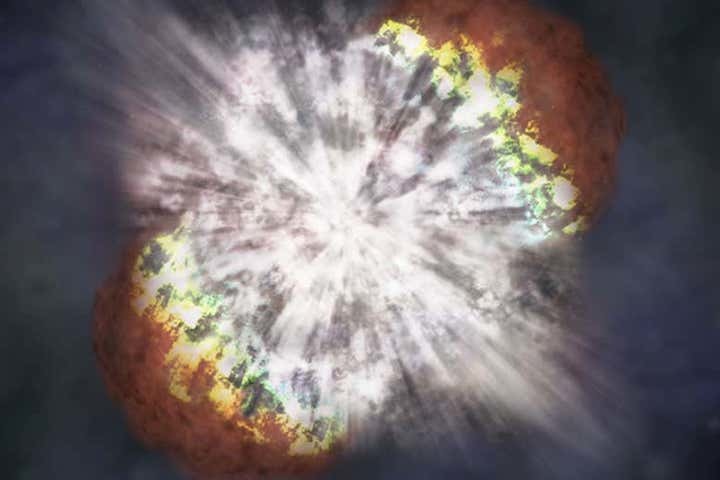25.01.2020

The mystery of a strange exploding star spotted in 2006 may finally be solved. At the time it was discovered, the supernova SN 2006gy was the brightest we had seen, and since then researchers have been trying to figure out why. Now, they may have a solution.
“It was weird from the beginning because it was so extraordinarily bright and radiated so much energy, over 100 times more than a normal supernova,” says Anders Jerkstrand at the Max Planck Institute for Astrophysics in Germany. Then, when a team of researchers examined the supernova’s light a year later, it got even stranger, with some researchers suggesting antimatter could be responsible.
That theory didn’t take hold, but the spectrum of the light from the explosion had never been seen before in any supernova, indicating the presence of some unidentified substance.
By looking at extensive lists of how different atoms emit light, Jerkstrand and his colleagues found that the explosion must have contained a great deal of iron – with a mass at least one third that of the sun. The most common types of supernovae don’t make that much iron, so the researchers ran a series of simulations trying to match the appearance of SN 2006gy with rarer types of explosions.
The sort of supernova that creates enough iron to match this one is called a type Ia, but those are usually 100 times dimmer than SN 2006gy. The best way the researchers found to make a type Ia supernova 100 times brighter is for it to slam into a cloud of material as it explodes, converting the kinetic energy of the blast into light.
The scenario that Jerkstrand and his team found that best matches SN 2006gy starts with a pair of stars orbiting one another in a shared cloud of gas. As the two spiralled towards one another, the gas was blown off, creating a cloud around the stars. When they collided, they blew up and the blast crashed through that cloud in an explosion of light.
Understanding strange variants like this could help us figure out other types of supernovae, says Jerkstrand. “Type Ia supernovae are also used to measure the expansion of the universe, so understanding how Ia supernovae explode is really important for cosmological applications as well,” he says.
Quelle: NewScientist
